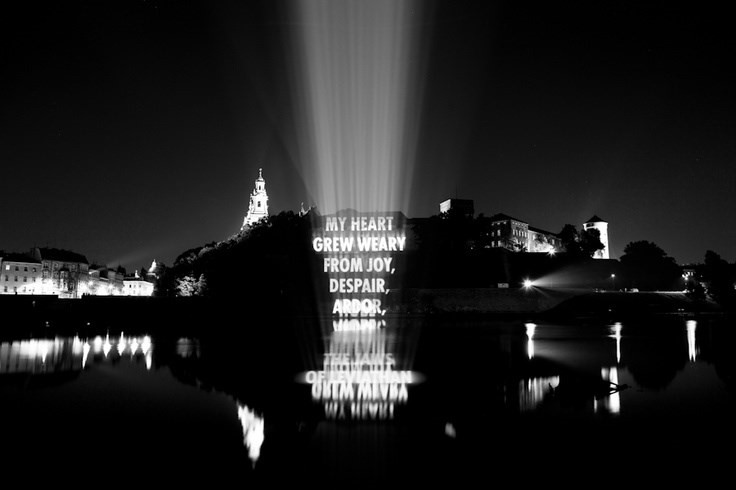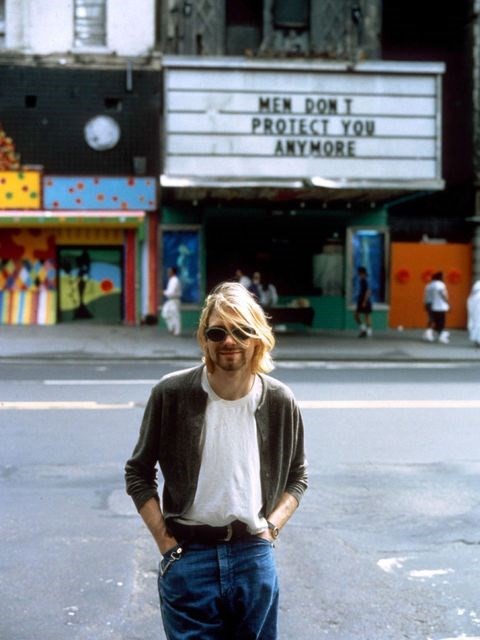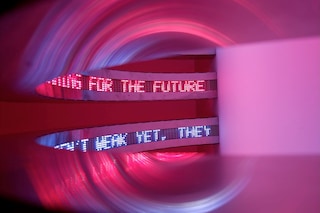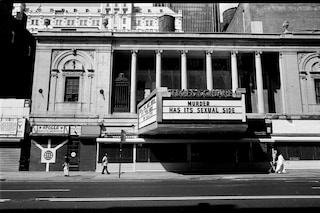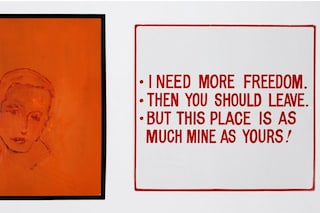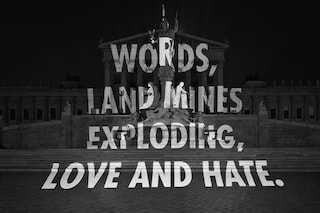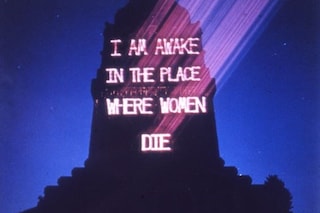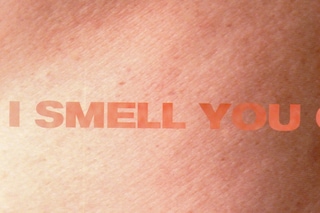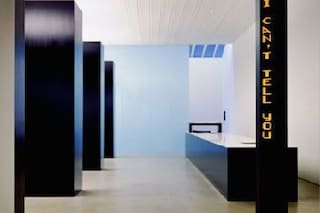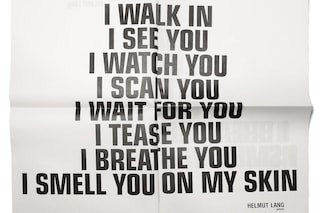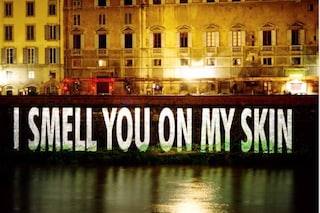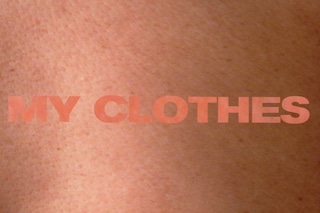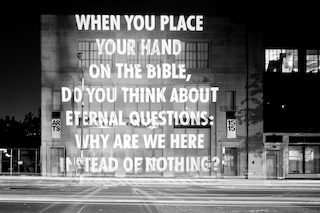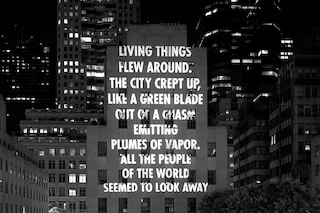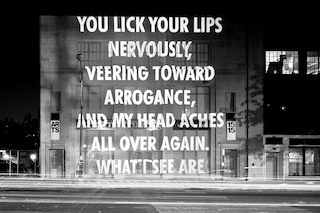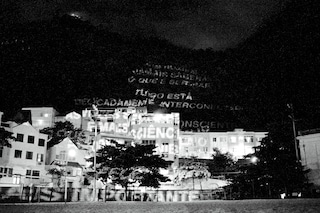We remember some of the prolific American word artist’s most seminal moments
Over the course of her 40-year career, visionary American artist Jenny Holzer has harnessed the power of words, often displayed in public environments, to capture the attention of passersby and disseminate poignant living truths about contemporary society. “I like placing content wherever people look,” she told Interview Magazine in 2012, “and that can be at the bottom of a cup or on a shirt or hat or on the surface of a river or all over a building.” Her texts – whether penned by the neo-conceptualist herself or borrowed from others – are intended to challenge and prompt meditation in an increasingly fast-paced world. Some are funny, others disturbing, many are political (propagating feminist or anti-war ideology) but all are inherently poetic.
Holzer is a master of context, able to transform spaces and objects into interactive artworks while paying homage to their original form. She was the first woman to win the Gold Lion at the Venice Biennale for her 1990 transformation of the American pavilion. This week sees the 66-year-old artist launch a new collaboration with Off-White’s Virgil Abloh as part of his forthcoming collection entitled ‘Temperature’, to be shown at the Pitti Uomo tradeshow in Florence tonight. As we wait impatiently to witness the fruits of their labour, we look back on some of Holzer’s most seminal moments to date – from her iconic work with Helmut Lang to her magical reimagining of the Guggenheim in New York.
THE TRUISMS
Growing up, Holzer had dreams of becoming an abstract painter. She studied painting, printmaking, and drawing, before moving to Manhattan in 1976 to enroll in the Whitney Museum’s independent study programme. It was there that she began producing her first text-based artworks, dubbed Truisms (1977-87). These cult pieces sprung from a “wonderful yet daunting” reading list given to students by Whitney tutor Ron Clark. Holzer, in her words, “reacted against it (and) reduced all the reading to one-liners” which summed up the spirit of each book – "A LOT OF PROFESSIONALS ARE CRACKPOTS,” for example, or “ROMANTIC LOVE WAS INVENTED TO MANIPULATE WOMEN.”
First, she printed these words on white paper in bold, black, italicised capitals, heading out at night to paste the posters on walls, fences and buildings all over Manhattan. Later, they became colourful, and she emblazoned the text on t-shirts, stickers and stone benches – wherever they would be most readily seen. In 1982, she created her first large-scale LED sign, mounted on the Spectacolor board in New York’s Times Square, where shoppers were presented with slogans such as “PROTECT ME FROM WHAT I WANT”. On her initial decision to create public works, she told the Guardian, “I knew the reading list had genuinely important material and I knew most people in the world wouldn't read it. So I thought, ‘Maybe I can convey some of the valuable content in an accessible way’.”
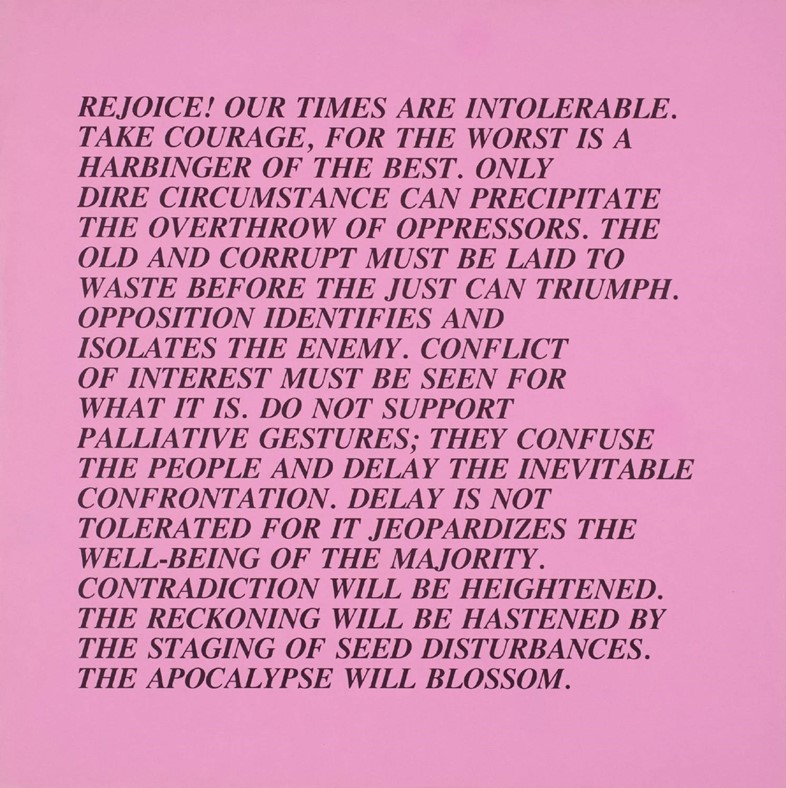
THE LIVING SERIES
In 1981, Holzer embarked on one of her first collaborations, with fellow American artist Peter Nadin for the so-called Living series. For this, she adopted aluminium and bronze plaques as the canvas for her musings, mirroring those seen on medical and government buildings. Some of the texts are instructive: “SPIT ALL OVER SOMEONE WITH A MOUTHFUL OF MILK IF YOU WANT TO FIND OUT SOMETHING ABOUT THEIR PERSONALITY FAST”; others satirical: “IF YOU AREN’T POLITICAL YOUR PERSONAL LIFE SHOULD BE EXEMPLARY.” While others offer up sombre thoughts and observations on daily life: “AFTER DARK IT’S A RELIEF TO SEE A GIRL WALKING TOWARD OR BEHIND YOU. THEN YOU’RE MUCH LESS LIKELY TO BE ASSAULTED.” Nadin made portraits of men and women, paintings of hands holding hammers, and abstract colour works to accompany the plaques, amplifying and reflecting their messages.
THE GUGGENHEIM INSTALLATION
One of Holzer’s most memorable architectural installations was created for her exhibition at the Guggenheim Museum in 1989. This featured a 535-foot-long sign which ran in an unbroken circle around the Frank Lloyd Wright-designed building’s spiralling parapet wall. The words were taken from a number of the artist’s previous series – including her notoriously provocative Inflammatory Essays, the follow-up series to Truisms, which featured whole paragraphs of text, centring on taboo subjects. The innovative result was a complete immersion in Holzer’s world, both mentally and physically. As the New York Times review stated, “In addition to the meaning of her words, there is the perceptual power and wonderful spatial disorientation of their upward-circling stream, which are heightened by shifts in colour, typeface, speed and, upon occasion, direction.”
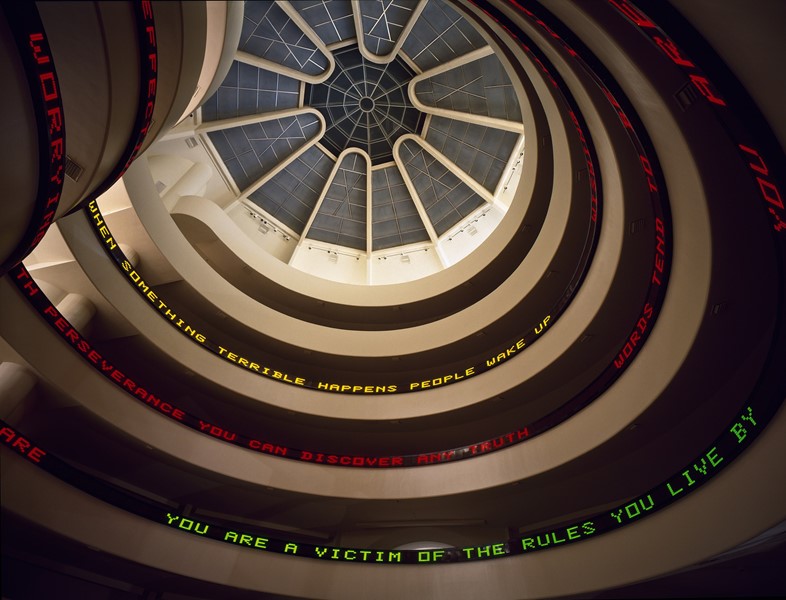
THE HELMUT LANG YEARS
Holzer’s multiple collaborations with Helmut Lang represent some of the most iconic artist/designer pairings of all time. The duo were introduced by late art and fashion critic Ingrid Sischy who encouraged them to join forces for the Florence Biennale in 1996. The evocative installation they dreamed up comprised a space filled with fragrance – designed by Lang, and intended to conjure the lingering scent of a lover on your bed sheets – and adorned with LED signage by Holzer, bearing passionate proclamations, such as “YOU ARE MY OWN,” “YOU ARE THE ONE.”
Later, Lang invited Holzer to produce artworks for his New York Flagship store, and dedicated perfume store respectively, with the intention of reimagining the traditional retail space. But arguably their most memorable feat is the compelling “anti-advertising” campaign they devised, along with art director Marc Atlan, for Lang’s first fragrance launch in 2000. Shunning the glossy photo campaigns usually used to market perfume, Lang asked Holzer to create sensual slogans – “I TEASE YOU / I BREATHE YOU / I SMELL YOU ON MY SKIN” – printing them in chunky newspaper headline font on white fold-up posters.
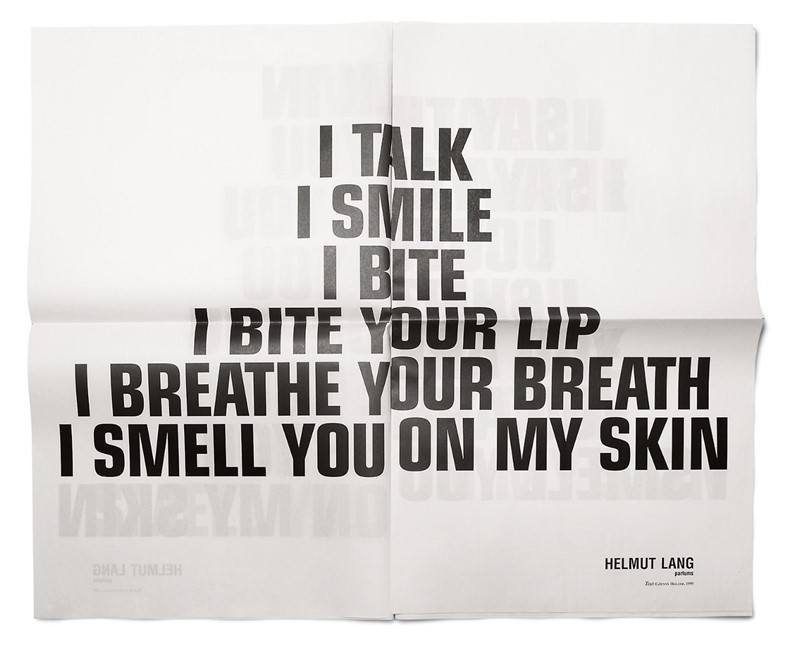
THE FINAL WRITINGS AT BERLIN NEUE NATIONALGALERIE
In 2001, Holzer created the last installation ever to feature her own words – made for the Mies van der Rohe-designed Neue Nationalgalerie in Berlin. She has since gone on to declare that she does not view herself as a natural writer, preferring to share the words of others instead. As grand finale’s go, this piece was particularly spectacular, comprising of 13 LED displays hanging from the black steel ceiling grid of the building’s elegant great hall. These lit up the space with amber text, cultivating an otherworldly atmosphere that stood in sharp juxtaposition to the disturbing monologues they bore: “I SING HER A SONG ABOUT US / I STEP ON HER HANDS / SHE TIGHTENS AND I HIT HER…” The work was so popular and sensitive to the environment it embellished, that it has been kept on as a permanent part of the gallery’s collection.
“I like placing content wherever people look, and that can be at the bottom of a cup or on a shirt or hat or on the surface of a river or all over a building” – Jenny Holzer
POETIC PROJECTIONS
More recently, Holzer has been experimenting with the projection of words onto vast architectural structures, landscapes and even waves, to ephemeral effect. “I want it to be a little like song. You know, rise and fall," she says. One of the most visually powerful of these was the imposition of the words of Polish Poet Czesław Miłosz onto the site of the Wawel Royal Castle, Krakow in 2011, where lines like “MY HEART GREW WEARY, FROM JOY, DESPAIR, ARDOR” rebounded in white light from the castle’s hilly surroundings, and down onto the surface of the water below it. Holzer’s talent for creating breathtaking, site-specific installations shows no sign of dwindling.
PROBING PAINTINGS
In 2007, after a long hiatus, Holzer returned to the medium of paint, her style abstract, her agenda political. Driven by an extreme disdain towards the war on Iraq and Afghanistan, she began obsessively scouring redacted, declassified documents from the US National Security Archive, creating silkscreen paintings from her findings – think maps plotting the invasion of Iraq, featuring commands like “exploit” and “isolate” next to arrows highlighting certain territories. Other source texts for her paintings include confessions or letters from prisoners and their families, autopsy and interrogation reports, and documents discussing torture methods. As such, the bold American artist continues to probe at the darker side of the human condition, encouraging no combination of words, in any context, to go unquestioned.
